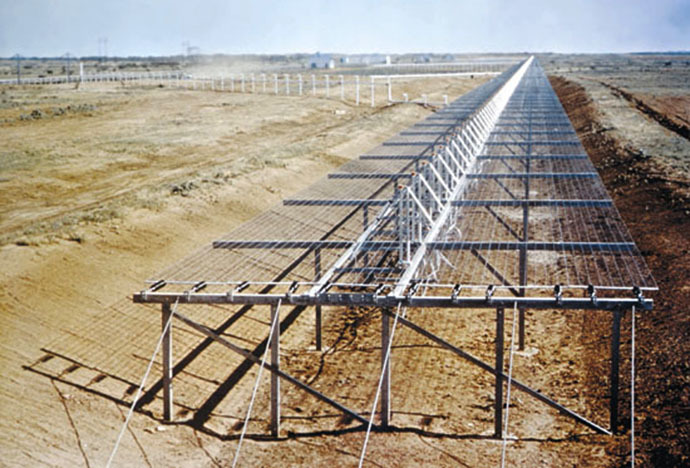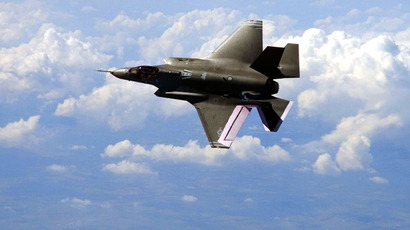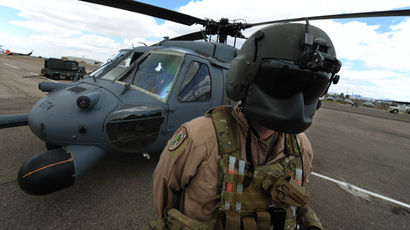Air Force shuts down ‘Space Fence’ surveillance system

Federal budget cuts are compelling the US Air Force to shut down its space surveillance system, which detects and tracks objects and satellites orbiting the Earth, but costs the agency $14 million a year.
The Air Force on Monday announced its plan to shut down the surveillance system by October 1, citing the sequestration as the cause. The Air Force operated the surveillance system under contract, and the agency has notified the vendor, Five River Services in Colorado Springs, Colo., that it will probably not be renewing its options after the fiscal year ends on Oct. 1.
“This is your notice to begin preparing the sites for closure,” said a memo received by the vendor, which was obtained by Space News. “…A specific date to turn off the mission system has not been established yet, but will be provided to you immediately upon determination.”
By deactivating the surveillance system, the Air Force Space Command will save $14 million a year, but it will no longer be able to track objects or debris that come into Earth’s orbit, or provide information to predict collisions.
The surveillance system, also known as the “Space Fence” due to
its vertical transmission of a “fence” of radar energy that can
deter any objects from crossing it, has been in operation since
1961 and is outdated, Commander of the Air Force Space Command
General William Shelton said in a news release. Rather than spend
any more money on old technology, the Air Force will disable it
and instead work on a new system that can more precisely locate
objects orbiting the Earth.

The current system, which will be discontinued, is made up of three transmitters and six receivers that are dispersed throughout the southern United States.
It’s “much less capable than the space fence radar planned for Kwajalein Island in the Republic of the Marshall Islands,” Shelton said, comparing the old system with the new one the Air Force is planning. “In fact, it’s apples and oranges in trying to compare the two systems.”
The new “space fence” will be more sensitive to data about objects orbiting the Earth, and have the capability to track objects as small as a softball located 1,200 miles away from the Earth. It will also be able to provide information about unexpected collisions, satellite maneuvers or satellite break-ups.
More than 21,000 piece of debris larger than 10 cm are currently known to orbit the Earth, and the estimated number of particles between 1 and 10 cm is 500,000. A space fence system monitors the data automatically, and provides important information about the condition of satellites.
Last year, NASA almost lost its $400 million Fermi Gamma-ray Space Telescope in a collision it narrowly avoided. And in 2009, a US Iridium communications satellite collided with a Russian Cosmos 2251 communications satellite, which added more debris to the atmosphere and reinforced the need for better tracking of objects in Earth’s orbit.
But budgetary concerns have held the Air Force up from awarding a new contract to build the updated system. At a meeting with congressional lawmakers in July, Shelton said he was ready to award a contract, but that the Pentagon is still reviewing the request.
“I can tell you from a personal perspective it’s a high priority for Air Force Space Command, and I think for the nation in terms of space situational awareness,” he told lawmakers. “So we’re hopeful that we’ll get authority to award that contract very shortly.”
But until the Pentagon allocates its funds to establish a new space surveillance system, the US will soon be left in the dark about the objects orbiting the Earth and the threats NASA’s satellites may be facing.














